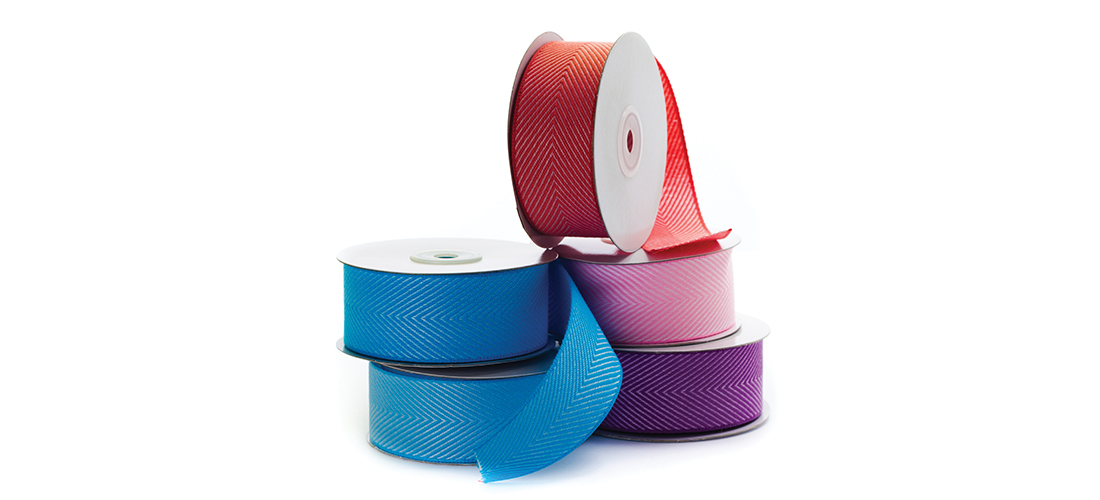
Fabrics of Life
Marking time with tulle
By Susan S. Kelly
For a lot of people, hearing a particular song instantly reminds them of, and transports them to, a particular time, day, or even a particular time of a particular day. I’m no different. “You’ve Lost That Lovin’ Feelin’” — first kiss during an eighth-grade dance; I was wearing pink fishnet stockings. “In-A-Gadda-Da-Vida” — a terrible mixer featuring an inflated parachute at a boys’ boarding school. “Brandy” — freshman year at UNC and the song that blared day and night from the open windows of a frat house across the Granville Towers parking lot. “Toes in the Water”— a family trip to Anguilla one Thanksgiving.
So tunes and lyrics and life’s passages are connected, sure. The same could be said for cars, probably, and slang, and food, and even plants. Remember when spider plants, with their little dangling offspring, were ubiquitous in every dentist’s office?
But the same can be said for me and . . . fabrics. A mere mention of a specific fabric immediately raises a time, place or event. For example, we’ve recently finished the Transitional Dark Cotton phase of every year. This phrase was applied to the proper clothing every early fall when I was growing up, designating post-summer whites but pre-autumn wools. Returning to school required smocked, short-sleeved Transitional Dark Cotton dresses of Black Watch and Royal Stewart plaids. I carried this pounded-in dictate all the way to college, where I’d obediently wear Transitional Dark Cottons to football games in 90-degree heat we combatted with a lot of bourbon poured into a little Coke — the traditional Transitional Dark Drink. I no longer wear the former or drink the latter. But I still know all the words to “Brandy” (see above).
Utter “raw silk,” and I flashback to the late ’60s, when my parents had parties and the de rigueur outfit for women was a floor-length “hostess skirt” made of raw silk — a slubbed, almost rough, stiff textile. You don’t see raw silk much anymore, except on my husband’s tie and cummerbund set, because, of course, it belonged to his father. In the ’60s.
Oilcloth is a horrid name for a fabric; who wants a reference to grease in any name? But oilcloth was what, in Girl Scouts, we stitched together in squares and filled with batting to create “sit-upons,” a primitive cushion we toted to campouts to keep our rear ends dry on wet dirt.
Flannel, of course, was for sleeping bag insides, and Sunday School flannel boards, where donkeys and bulrushes and halos and Jesus himself were rendered in flimsy pieces that the teacher — but never, ever, you yourself — got to arrange and make pictures with. I’m still bitter, yes. But mostly flannel summons up Lanz nightgowns, the yoked, neck-to-toe, beflowered, long-sleeved, anti-sex precursor to snug sacks. But easier to walk in.
Of every fabric out there, only denim demands a bigger claim on my life span than grosgrain. I’d never encountered grosgrain until I went away to boarding school. In my tiny foothills hamlet of Rutherfordton, fake alpaca was about as far up the fabric food chain as one could aspire. But grosgrain ribbons became the first fabric I can remember truly envying someone owning. Striped grosgrain in bright yellows, blues, greens, hot pinks . . . I still go somewhat weak at the knees. I wanted that yardage for bows on ponytails at the nape of the neck, the preppy hair style of the ’70s.
Eventually, I amassed a collection necessitating two coat hangers draped with the limp lengths, not counting the pile on my dresser that I’d iron weekly. And even when I chopped off my hair, there were grosgrain belts and grosgrain pocketbook covers and grosgrain pillows, ridiculous little tufted things covered in grosgrain ribbons woven like children’s potholders. Thankfully, my obsession had waned by then. Madras, another prepster memory textile, had run its course, too, and just as well. Thick, pouchy madras did no favors to guys with a bit extra junk in the trunk.
And then came peau de soie season: weddings. Just as I’d never heard the term “piqué” (graduation white-dress fabric for both eighth grade and high school), peau de soie was a foreign term until you had to have peau de soie pumps that sucked up bridesmaid dress-matching dyes like a sponge. Shame those pretty words have gone by the wayside. Spandex and Lycra can’t hold a candle to the silken sibilant syllables of peau de soie.
So many fabrics on the timeline. Tulle. Eyelet. Calico. Chambray. Cotton batiste. Each with its own indelible hashmark of memory. Surely I’m not alone here. Consider the number of children who can’t part with that soft, worn, torn dreg of a baby blanket. Maybe the spit smell is oddly comforting. Just like hearing “Layla” and remembering that house party on Ocean Drive, where the furniture was bolted to the floor. PS
Susan S. Kelly is a blithe spirit, author of several novels, and a proud grandmother.





